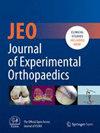A novel handheld wireless robot for total knee arthroplasty: Early experiences and clinical results
Abstract
Purpose
The percentage of total knee arthroplasty (TKA) performed robotically (rTKA) is rising exponentially. While this technique has well-established accuracy improvements, there are mixed patient-reported outcome measure (PROM) benefits compared to manual TKA (mTKA). Potential challenges in workflow, restricted implant compatibility to the robot and system cost have limited robotic adoption. A new robot seeks to address these and other rTKA concerns.
Methods
This was a single surgeon retrospective series of the first 25 rTKA cases performed with a novel, wireless, handheld, open-implant robot and 25 mTKA cases. Data were recorded to observe performance and safety outcomes, including X-ray-based hip-knee-ankle (HKA) angle measurements, adverse events (AEs), range of motion (ROM), and PROMs including pain and knee society score (KSS). Case times for a subset of cases were recorded. rTKA cases were completed with implants not previously used by the surgeon. mTKA cases used implants and instrumentation standard to the surgeon's practice. Patients were tracked up to 3 months.
Results
rTKA and mTKA cases both yielded positive clinical results. There were 0/25 HKA angle outliers (>3° from plan) and 1/25 outliers in the rTKA and mTKA cohorts, respectively. No AEs were observed in either group at follow-up. rTKA case times were similar to mTKA by case 5, with rTKA setup under 8 min for most cases. There were no differences in ROM or PROMs between cohorts.
Conclusion
rTKA preliminarily showed safe and effective outcomes in early results. Surgeon and staff adoption showed minimal hurdles at this institution, as rTKA case with an implant system new to the surgeon were similar within five cases to mTKA case times using an implant system known to the surgeon, with comparable clinical results. This initial experience suggests the system may offer a more accessible alternative to existing robotic options, though further study is needed.
Level of Evidence
Level IV.


 求助内容:
求助内容: 应助结果提醒方式:
应助结果提醒方式:


